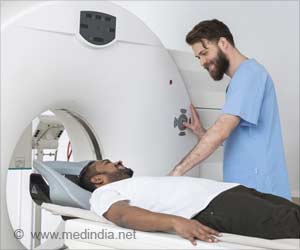- Prostate-Specific Antigen (PSA) Test - National Cancer Institute, National Institutes of Health, USA - (https://www.cancer.gov/types/prostate/psa-fact-sheet)
- PSA Test - Mayo Clinic - (https://www.mayoclinic.org/tests-procedures/psa-test/about/pac-20384731#:~:text=The%20PSA%20test%20is%20a,below%20the%20bladder%20in%20men)
- Cormick BZ, Mahmoud AM, Williams SB, Davis JW. Biochemical recurrence after radical prostatectomy: Current status of its use as a treatment endpoint and early management strategies. Indian J Urol. 2019; 35(1): 6-17. - (https://www.indianjurol.com/article.asp?issn=0970-1591;year=2019;volume=35;issue=1;spage=6;epage=17;aulast=McCormick)
- Rosiello G, Bandini M, Briganti A. Salvage pelvic lymph node dissection for lymph node recurrent prostate cancer. Curr Opin Urol. 2019; 29(6): 629-35. - (https://pubmed.ncbi.nlm.nih.gov/31503189/)
About
The prostate is a walnut-sized gland that is a part of the male reproductive system. It secretes a fluid that nourishes and protects the sperms, which are the male reproductive cells. Cancer of the prostate is a major cause of concern in aging men. Prostate cancer usually resolves after primary therapy in the majority of men. However, in some men, a condition called biochemical recurrence (BCR) occurs, also known as biochemical relapse or PSA failure.
In this condition, the prostate-specific antigen (PSA), a protein produced by the normal and prostate cancer cells starts to become elevated and detectable by the PSA test. There are different cut-offs for the PSA level, depending on the treatment modality, such as surgery or radiotherapy.
If the PSA level is higher than normal, there is a high chance that cancer can come back, which is technically termed as "recurrence". It has been reported that approximately 20-40 percent of men who had undergone curative treatment may experience BCR. BCR can be considered to be a micro-metastatic condition or precancer, i.e., cancer that has the potential to spread to other parts of the body. It can be likened to a ticking timebomb, which could explode at any moment and proceed to full-blown metastasis (spread of cancer) in the absence of timely medical intervention.
Sites of Prostate Cancer Recurrence
In case BCR transforms into metastatic cancer, it can spread to various regions. Most common sites are located nearby. Besides the prostate gland itself, it commonly spreads within the hip bone region (pelvis), especially affecting the pelvic lymph nodes. It can also spread beyond the pelvic region, affecting bones and even the lungs and other organs.
Detection of Biochemical Recurrence
There are essentially four strategies that can be adopted for the detection of BCR. In the early stages, merely estimating the blood levels of PSA will suffice. However, if it is suspected that cancer has already started to spread, then a digital rectal exam (DRE) and imaging may be required.

In rare cases, genomic testing may be recommended by the oncologist. These are briefly highlighted below:
- PSA Test: This is a blood test that measures the level of PSA, which is an early biomarker of prostate cancer. Although the level of PSA varies, the normal value of PSA is taken to be 4 ng/ml (nanograms per milliliter). However, after prostatectomy, the normal value drops to 0.1 ng/ml. So, if the level of PSA exceeds this value (usually >0.2 ng/ml) in a man who had previously recovered from prostate cancer, he could be having BCR
- Digital Rectal Exam (DRE): Sometimes DRE is used in combination with the PSA test to manually examine the rectum and associated structures to gain insight into the condition of the prostate gland. The presence of an abnormal lump in the area of the prostate gland could indicate cancerous growth, in which case the doctor might order a prostate biopsy
- Imaging: Current guidelines recommend using imaging after BCR is detected. Some of the conventional imaging modalities include transrectal ultrasound (TRUS), computed tomography (CT) scan, and technetium-99 m-MDP bone scan. However, even when PSA levels become elevated, it doesn’t mean that cancer has set-in. In fact, in the early stages, the spread of cancer (metastasis) may not show up during standard imaging techniques, such as CT scan or bone scan. However, nowadays, more advanced imaging techniques are available that are highly sensitive. One of these is the PSMA PET/CT Scan (prostate-specific membrane antigen positron emission tomography-computed tomography scan). Besides these, there are also several other imaging modalities, including magnetic resonance imaging (MRI) and F-fluciclovine PET-CT, the latter being an evolving technology
- Genomic Tests: These are newly-developed gene-based test platforms that can detect subtle changes in the cells’ genetic makeup when they become cancerous. These tests are used in conjunction with Personalized Medicine approaches that are tailored to the needs of a particular patient. The most widely available commercial genomic test for detection of BCR is the Decipher® Assay, manufactured by Decipher Biosciences Inc., San Diego, California, USA

Treatment for Biochemical Recurrence
There are a few treatment options for men with BCR, which are briefly highlighted below:
- Salvage Radiotherapy (SRT): This is the standard treatment modality for patients exhibiting BCR following surgical removal of the prostate (prostatectomy). This treatment strategy uses radiation to “salvage” the tissues that remain unharmed, despite the BCR. A certain percentage of men can be successfully treated and even cured, using this procedure
- Androgen Deprivation Therapy (ADT): This therapy aims to reduce the levels of male sex hormones or androgens to stop them from fueling prostate cancer cells. In this strategy, hormonal shots are given to the affected men, in a bid to lower the levels of PSA. It has been found that these hormonal shots can indeed lower the PSA levels, sometimes for very long periods. However, it’s still not clear whether giving these shots actually prolongs life. This treatment can also cause side effects, including thinning of bones, increased risk of diabetes, and heart disease. It also causes hot flashes and loss of libido
- Salvage Pelvic Lymph Node Dissection (SPLND): This is the treatment of choice if only the pelvic lymph nodes are affected by the BCR. Pelvic lymph node involvement should be verified by PET/CT scan before performing the procedure. This treatment can produce favorable outcomes, with 2-year biochemical progression-free survival ranging from 23-64 percent and 5-year overall survival of 84 percent. Currently, a robotic approach is the preferred modality for performing this procedure
Conclusion
With rapid advances in modern technological innovations, physicians have become more and more empowered to deliver the best treatments for their patients. The latest state-of-the-art imaging technologies, genomic testing, and robotic surgery have ensured that patients with BCR of prostate cancer can get the best possible care they need so that they stand a better chance of long-term control and cure.













